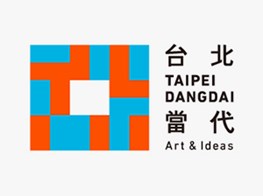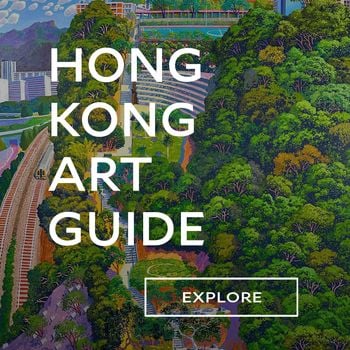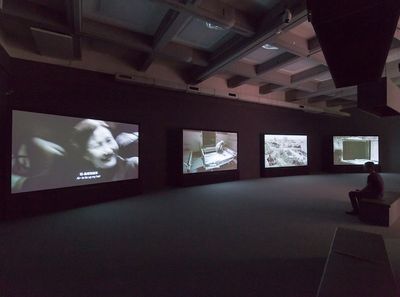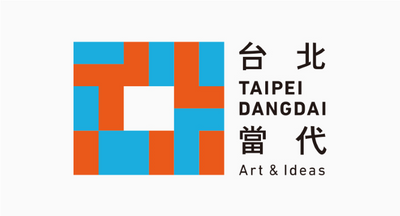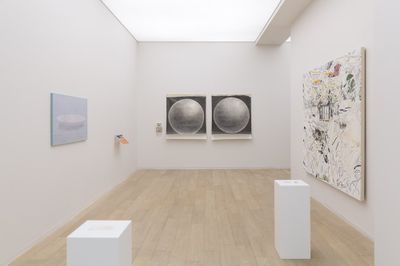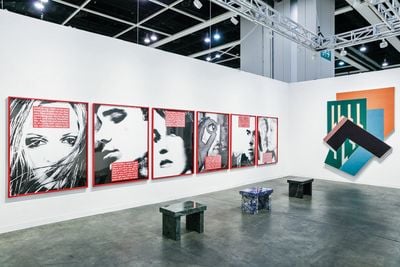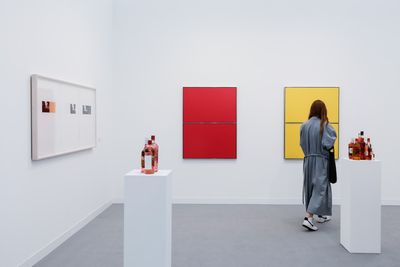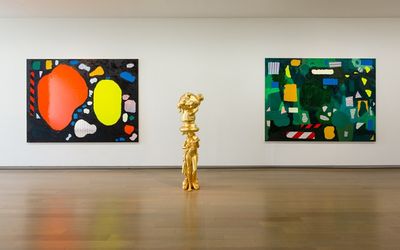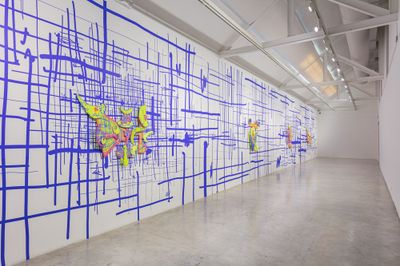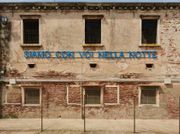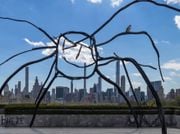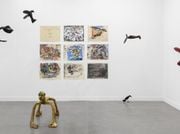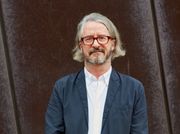Magnus Renfrew
Magnus Renfrew. Courtesy Magnus Renfrew.
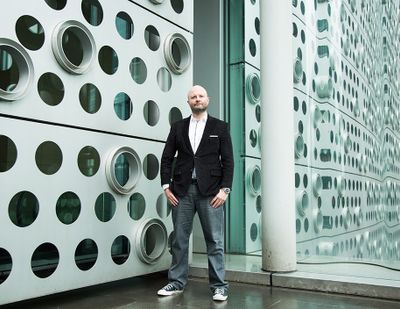
Magnus Renfrew. Courtesy Magnus Renfrew.
Magnus Renfrew has twice been named by ArtReview as one of the 100 most influential figures in the international art world. In 2008, he came to prominence in Asia's art world and within the wider global scene when he was appointed founding director of Art HK. The fair was subsequently acquired by MCH Group and re-branded in 2013 under Renfrew's direction as Art Basel in Hong Kong.
In 2017, Renfrew, who continued as Art Basel in Hong Kong's founding director until September 2014, penned a book which sought, from his own perspective, to provide a reflection on the unfolding of Hong Kong's emergence into an art world supercity. Published by Penguin, Uncharted Territory: Culture and Commerce in Hong Kong's Art World provides an engaging discussion on the city's potential to continue its development as a cultural hub, touching on the challenges ahead.
Uncharted Territory provided a tidy close to one chapter for Renfrew, as two new ones took shape: at the beginning of 2018 it was announced that Renfrew, along with the founders of Art HK—Tim Etchells, Angus Montgomery, and Will Ramsay—were launching a new art fair called Taipei Dangdai. As the year drew to an end, it was also announced that Renfrew would join Etchells and Montgomery as an investor in Art SG, an art fair scheduled to launch in Singapore in November 2019.
In this interview, Renfrew reflects on the writing of Uncharted Territory, discusses Taipei Dangdai, which will shortly open to the public at Taipei Nangang Exhibition Center from 18 to 20 January, and also Art SG, noting a new emphasis in the art fair circuit on regionality.
ADLet's begin by discussing the experience of writing Uncharted Territory. It was no doubt a time of great reflection for you.
MRThe book afforded me the opportunity to formulate and articulate my thoughts on Hong Kong's art scene. What struck me most was the scale of the opportunity that existed, and continues to exist, in Hong Kong. The scale of opportunity exists because this is a city of commerce, with unique characteristics that allow it to play a very prominent role in redefining what 'global' actually means.
Historically, when people have talked about something being 'global' or 'international', what they really mean is the acceptance of a Western model of doing things, or a Western view of the world. What became obvious to me is that this view was outdated, and being truly 'global' meant taking a multi-polar view; one that is more inclusive and disavows a singular view of the world. Hong Kong is in an extraordinary position because it is truly international. It has a wide psychological and physical catchment area and its hyper-connectivity made it unusually well-placed to be at the centre of the discourse that was taking place around the topic of 'global'.
I think in many ways the book was a call to action for Hong Kong art to embrace its internationalism, and to accept the importance of its relationship to China and the advantages that these two things bring.
AD
MRThe internationalism that Hong Kong has enjoyed has always been part of its success, and I believe it must assert its connectivity, internationalism, and openness as core advantages and core characteristics. Its internationalism is part of its local identity, and I believe to reject that would limit the role that Hong Kong can play. I don't believe there is a need to choose between one thing or the other. Hong Kong is unique because it can be both local and global. It doesn't need to choose between the two.
ADWhile the city's internationalism is important, there is a sense that more needs to be done to support Hong Kong artists.
MRAbsolutely. I think there needs to be space for experimentation and a place that artists feel comfortable with. The non-profit institutions address some of those issues, but the very economics of running a commercial gallery mean that young and emerging artists are structurally disadvantaged in the city. The overheads of running a gallery in Hong Kong—which relate mainly to the cost of real estate—are such that it is very hard for galleries to support young or emerging artists or to take risks on work that is not easily digested commercially.
Having said that, the galleries are aware of the need to support Hong Kong-based artists and this is reflected in their programming. Almost every year, Pearl Lam hosts one exhibition dedicated to Hong Kong artists. Edouard Malingue Gallery and Simon Lee have continued to support local talent, as have 10 Chancery Lane and Gallery Exit. As the market grows, perhaps space will become increasingly available for young and emerging artists from the city. One of the changing dynamics that might alleviate this issue is European and American galleries becoming more aware of work by Hong Kong artists and beginning to represent artists from Hong Kong in European and US markets.
ADWe once discussed the art fair as something more than just a trade event, since it also exists as a type of exhibition space.
MRIn a situation where there isn't a strong institution, I think that an art fair does provide a temporary museum for contemporary art. When people write about art fairs, they often write about the phenomenon of the cultural thing itself or the market; they don't always engage in a meaningful way with the art being shown and what it might say about our times. Whilst the market phenomenon and the cultural story is an interesting one—I've written a book about it myself, so I can't be too damning—I think that there's also the opportunity to use art fairs as a platform for exhibition, display, and reception. Work is often displayed for the first time at a fair, and therefore the fair becomes a space relevant to exhibition and display, as much as sale.
At the same time, there is a risk in the art fair becoming the dominant place for display and the art fair environment can never replace the experience of seeing art in a gallery context. An art fair is a very competitive space, and I think that can lead to certain works achieving more prominence. For example, visually arresting artworks might overpower those that are quiet, reticent, and sometimes more considered.
ADIs the idea of an art fair as an exhibition space something you have been thinking about when it comes to your aspirations for Taipei Dangdai?
MRFirst, we want the Taipei fair to be accessible, and that means we want to make sure that we have quality work on view, ranging from USD 1,000 to over USD 10 million. Regarding accessibility, we have introduced a unique concept to Taipei Dangdai, which will see the fair dedicate a sector, entitled Salon, to presenting artworks priced below USD 8,000, designed to encourage young and new collectors.
We want the fair to have cultural impact, as well as commercial impact, and there is a talks programme, which will be focused on prompting discussion. The context is slightly different than when Art HK started; Taiwan already has very good institutions, and they have a very established and well-respected biennial. In fact, the fair in Taipei will overlap with the tail end of the 11th Taipei Biennial, Post Nature—A Museum as an Ecosystem, which runs until 10 March 2019. Through adhering to international standards of practice in terms of selectivity, we are putting together an art fair that's going to have excellent quality content, regardless of price.
ADThe 90 galleries participating in the fair were selected by a powerful group of gallerists—including Patricia Crockett (Sprüth Magers), Waling Boers (Boers-Li Gallery), Isa Lorenzo (Silverlens), Edouard Malingue (Edouard Malingue Gallery), and Elisa Uematsu (Taka Ishii Gallery). Can you please discuss the selection process and how galleries were selected for the fair?
MRWe were thrilled to have such a strong selection committee to support us in our first year. We had long discussions at the beginning of our week of meetings in the summer about the profile and positioning of the fair. The committee shared our desire to ensure that the fair had a strong sense of being in Asia and to respect its context. The committee also felt strongly that, given the exceptional quality of applications that the Fair received in year one, that we should be very strict on quality control and on ensuring that the galleries not originally from Asia had a very strong commitment to Asia. As a result, 70 of the 90 galleries selected originate from Asia. Of the 20 galleries participating from Europe and the US 10 have spaces in Asia and a further five have full-time on the ground representatives. In this way, the fair has solid foundations in the region, and this gives us a point of difference from other art fairs in Asia.
ADIn Chinese, dangdai translates as 'contemporary' or being 'in the present', will there only be contemporary artworks presented, or an historical offering too?
MRWhilst there is a major emphasis on the contemporary we have a number of historical presentations, which help to give context.
ADHow do you see Taipei Dangdai and ART SG fitting into the current network of art fairs?
MRThe art fair landscape has changed dramatically over the last 10 to 15 years. In 2005, there were three main global art fairs: Art Basel in Switzerland, Art Basel in Miami Beach, and Frieze London. These remain staples for galleries, even if they make no sales, just because of the endorsement that participating in the fair provides for their programmes.
There are now three Basels and four Friezes, if you include Frieze Masters and the new Frieze LA fair, three TEFAFs, and of course FIAC. So, you've really got about ten major global fairs now. It's not always possible to generate the global audience for each of those fairs, and it's hard work for the galleries to do all of them—they certainly couldn't do them all for branding purposes only. As a result, I think that regional fairs are gaining relevance. Regional fairs allow galleries to engage with audiences that they're looking to focus on or with whom they already have particular relationships. I think galleries will become increasingly strategic in terms of which fairs they choose to participate in.
Asia is still at the forefront of everybody's minds, which is visible in the strength of interest there is to participate in Art Basel Hong Kong. At a recent event, Marc Spiegler mentioned that 2018 was the first time that it was more competitive for a Western gallery to get into Art Basel in Hong Kong than it was for one to get into Art Basel in Basel. This is because 50 percent of the galleries that participate in Hong Kong must have a space in Asia, so there's really only 120 spots for Western galleries out of the 240 available stands. Art Basel in Basel has about 300 galleries, so that means there are probably 250 of the top galleries in the Western world competing for 120 spots. That's something that we all believed might happen at some point, but I think that point has arrived faster than any of us had anticipated.
Art Basel in Hong Kong is undoubtedly the global fair for Asia, but the other offerings around the region are looking a little bit behind where they should be. I think Shanghai is doing well with West Bund and Art021, but art fairs pretty much everywhere else don't necessarily reflect the reality of where the market is in the relevant region. This is often because art fairs are organised by gallery associations, which have different reasons for existing, as it were. An association's role is to be equitable to all its members, and this can mean that the art fairs they present will have a huge variance in terms of quality, and this impacts people's experience of the event.
For an art fair to be successful, it needs to have a selection process. An art fair is always judged by its weakest participant, and it gives you a sense of where things are in terms of the aspirations of the organisers.
ADWhy Taipei?
MRTaiwan has a rich history of collecting, with its collectors being some of the most active from the region at auction. Taiwan is one of the key consignment-gathering destinations for auction house specialists. It also has a strong and established gallery system. I think having a fair in Taiwan with an emphasis on quality control will offer the collectors in that region an opportunity to consider works that they otherwise are looking for at auction.
ADTell me about Art SG. Why did you want to get involved in this new art fair?
MRASEAN has a population of almost 700 million people and a relatively high per capita GDP. When you consider that Europe has a population of around the same size, it gives you a sense of the potential. Singapore is the wealth management centre of Asia, the collector bases of Indonesia and the Philippines are very active and whilst no single domestic market in Southeast Asia is big enough to sustain a major international art fair, there is great potential for a hub fair to bring together these constituencies to create a moment on the calendar for the international art world to engage with this incredibly important region. Southeast Asia deserves a focal point on the international art calendar.
ADLooking into the future, if in five years you were asked to write a book on the wider Asia art scene, what do you think the first two chapters might be titled?
MRThat is a tough question. I think that next five years will see a greater engagement with Asia beyond Hong Kong. So I guess 'Beyond Hong Kong' would be one of them. Whilst China is undoubtedly going to be the major story for the 21st century and a power house in every aspect of our lives, it is not the only story in Asia. Commercial galleries will be working hard to establish broader and deeper relationships across Asia. The art market tends to follow the money and the greatest creation of wealth at the moment is happening in Asia. I think that as tastes and confidence develop, collectors from Asia will become increasingly interested in the cultural output of the region.
In addition, the impact of museums such as M+ and the National Gallery Singapore will help the wider art world to develop a more sophisticated understanding of the region and this will provide a more solid foundation for curatorial and critical validation as well as commercial validation of art from Asia. This mainstream critical engagement will help to foster a wider acceptance of multiple narratives that scholars, curators, and non-profits have been advocating for some time, and take the discussion beyond outdated and colonial notions of East & West. So I guess 'Beyond East and West' would be another.
—[O]

